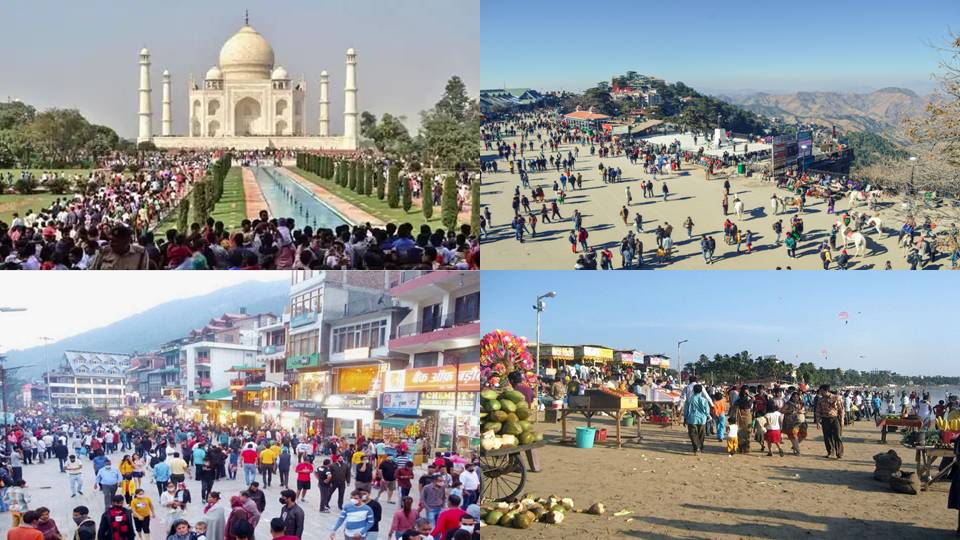World Travel & Tourism Council’s Economic Impact 2019 report states that India’s Travel & Tourism contribution to its GDP is around 4.9%. In 2020, Indian tourism contributed to around 7.3% of total employment opportunities. The young population and tremendous growth of tourism activities have also negatively impacted the environment of the country. The sensitive biodiversity and increasing frequency of tourism are causing a greater danger to the environment. In this critical climate change condition, it becomes very imperative to give light to the regulation aspect of tourism.
Sustainable tourism
A report titled Environmental Assessment of Tourism in the Indian Himalayan Region by Govind Ballabh Pant National Institute of Himalayan Environment (NIHE) has argued to address the disastrous effects of unregulated tourism in India. Arguing for the sustainable practices of tourism, the report highlights the negative impact of unregulated tourism on ecologies, the quality of people’s lives, and their well-being.
In the mass-tourism scenario, social & economic development of these tourist spots especially, ecologically sensitive zones, becomes challenging. The pertaining environmental problems related to mass tourism are solid waste management, water consumption crises, non-availability of continuous data pertaining to air & water quality of the tourists’ places, eco-sensitive zones, inadequate assessment of forest cover, and biodiversity losses.
The other social-economic issues involved are the contribution of tourist revenue to the state economy, tourist carrying capacity, data deficiency on visitors and vehicle inflow, data absence on tour guides, and awareness.
The picture becomes clearly visible when we compare the problems associated with unregulated & unmanaged tourism in numerical terms. For example, in the water deficit area of Ladakh, the average use of water by local residents is 75 litres per day, whereas a tourist consumes about 100 litres per day. Further, the consumption rate of food & fuel is also high.
Read More: What has PM Modi done for the Environment? Well, here is a comprehensive list
Regulations of tourism
So the real challenge in front of the government would be to regulate the tourist activities according to the differential conditioning of the region. The tourism report of NIHE suggests that the government needs to adopt a bottom-up approach in the regulations and management of tourist activities. The recommendation includes:-
- State-specific recommendation such as prior online registration of visiting tourists at a spot
- Assessment of carrying capacity of tourist destinations and eco-sensitive zones
- Quantification and segregation of waste
- Developing bio-composting units for reusing biodegradable waste
- Community-based waste recycling from non-biodegradable waste needs to be implemented in order to attract responsible tourism and its sustenance
- Regular air and water quality monitoring in urban as well as rural areas
Historically, our Indian Civilisation has been aligned towards living with the principles of nature. The unsustainable harnessing of nature and consumerism has already started to affect the climate of the world. The growing extreme natural calamities are all the result of the unregulated lifestyle. So it becomes very important to take pre-emptive decisions to regulate the tourism activities in India and the tourist footfall of the spot must be managed concerning the place’s tourism carrying capacity.
Support TFI:
Support us to strengthen the ‘Right’ ideology of cultural nationalism by purchasing the best quality garments from TFI-STORE.COM
Also watch:
